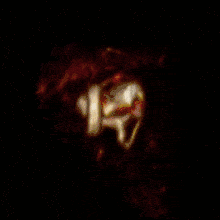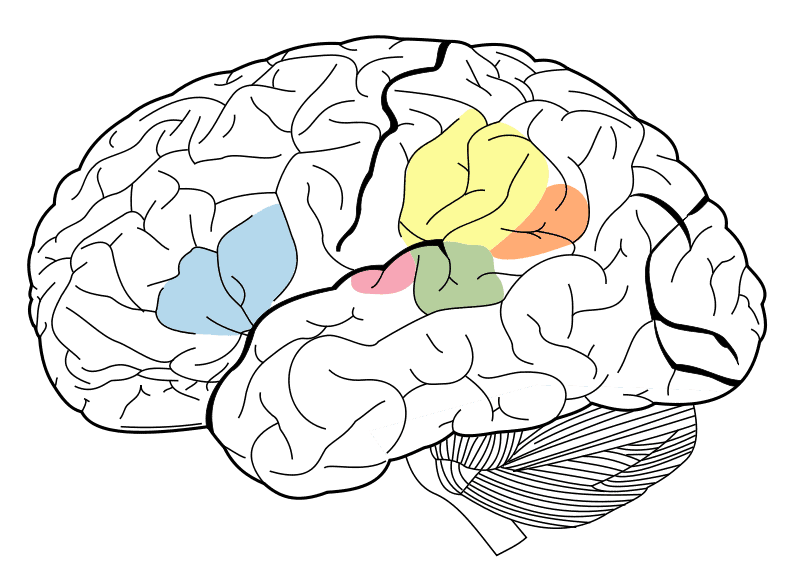I like my ears. I’ve been told they go well with my face, and they’re really good at holding the hair out of my eyes.! Yay for ears!
But (spoiler alert) these are not our ears’ primary functions. The workings of our ears’ internal mechanisms underpin two of our senses — hearing and balance (called equilibrioception).
So, have you ever been to a concert and wondered exactly how is it you can hear that mad riff that has hairs standing up the back of your neck? Or why you get dizzy headbanging to it? Well, we’re here to tell you all about your ears.

Hearing all about it
Our sense of hearing evolved to satisfy our need for a way to survey our environment for predators, prey, and natural disasters. While most of us tend to rely on seeing as our dominant source of information, the sense is not without its limits. The quality of reliable information our eyes feed us deteriorates rapidly as light levels drop, and they can only see a small area in front of us — and even there, it’s pretty easy to hide from or confuse it. Here’s an example:

The leopard is literally in plain sight, but it took me around three or four minutes to spot it. And that’s only because I knew it was supposed to be there so I really looked for it. By mimicking the environment, the predator fooled my brain into signing it off as just another pebble or rock. If I relied on my eyes alone, this slope would appear safe and the next thing you know, I’m a leopard’s chew toy.
That’s why hearing is so important. It allows us to keep tabs on our whole environment, 24/7, no matter where we’re looking or what we’re doing. It’s long-range enough to give us time to react to threats and it works basically everywhere.
Except in space.
The sensory organ that handles hearing is the ear. Through them, our brain can pick up pressure waves traveling through air, water or solids by turning the particle motion into sensory input. However, the flappy piece of tissue that most of us call an “ear” is actually an auricle (or pinna in other animals) and it’s just a small part of a much larger and complex mechanism.
The auricle acts like a funnel, capturing sound and directing it into the auditory canal. It also filters sound so only frequencies that you can actually hear are sent to your actual ear.
At the end of this canal, the sound hits the tympanic membrane, a piece of tissue that you might know as the eardrum. The tympanic membrane serves as the limit between the outer and middle ear. The membrane is thin enough that pressure waves cause it to vibrate, and in turn move three tiny auditory ossicles attached to it (the malleus, incus, and stapes).
These bones amplify the sound vibrations and send them to the cochlea, a snail-shaped structure filled with fluid in the bony labyrinth.

An elastic membrane runs from the beginning to the end of the cochlea, splitting it into an upper and a lower part. It has a hugely important part to play in our hearing; The vibrations from the eardrum apply pressure to the fluids inside the cochlea, causing ripples to form on the membrane.
This membrane houses sensory cells that have bristly structures protruding from them (they’re named hair cells because of this) which pick up on the motion by hitting the upper part of the cochlea. When the “hairs” bend, they open pore-like structures that allow for chemicals to pass through, creating an electrical signal for the auditory nerve to pick up.
But the ear isn’t just about hearing, it’s also the organ that allows us to keep balance. Balance is the ability to maintain the body’s center of mass over its base of support. While achieving this takes a lot of information from the different senses, the ear’s vestibular system feeds our brain vital information about our body’s position and movement. Kinda like our own personal gyroscopes.

Image via Wikipedia
The vestibular system is made up of those three semicircular canals you can see in the picture above. They’re placed at a roughly 90 degrees angle to each other and are called the lateral, superior, and inferior canals. Each of them is filled with liquid that flows in response to our body’s movements and pushes on hair cells in a structure called the cupula. Due to their position, each canal is sensitive to one type of movement:
- The horizontal semicircular canal picks up on head movements around a vertical axis, i.e. on the neck (as when doing a pirouette)
- The anterior and posterior canals detect rotations on the sagittal plane (for example, nodding) and the frontal plane (as when cartwheeling) respectively. Both anterior and posterior canals are orientated at an approximately 45 degrees angle between the frontal and sagittal planes.
The electrical signals from the cupula is carried through the vestibulocochlear nerve to the cerebellum for processing.
But, as always, both the voices and balance are just…
Products of your brain
Sensory organs are just that, organs that sense stuff. But they can’t make heads or tails of the information they provide, just as a microphone feeds information to your PC but doesn’t understand it by itself.
Hearing and balance also conform to that rule. The brain decodes information received from the ears and processes them mostly in the auditory cortex.

Equilibrium is maintained by the cerebellum (also known as the little brain) by using data from the semicircular canals along with information supplied by other senses.


